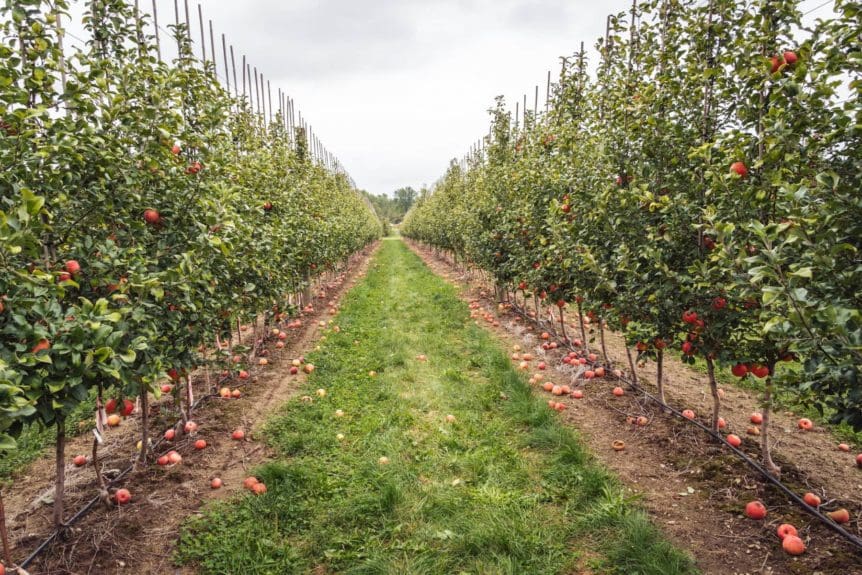Plus a few tips on the secret lives of trees – below ground.
Fall planting allows just enough time for the roots of a fruit tree to become established before winter. And that acclimation period is extremely important.
After a summer of big swings in weather – with excessive heat and drought in the spring, followed by excessive wet and rains through the summer, my learnings are that fall may be the “new” best time of year to plant trees! Roots continue to grow until the deep freeze comes. But they also start growing in very early spring when the ground thaws before their new leaves burst forth! In essence, a fall planting sets the stage for a tree to be ready for fast growth the following spring. And more importantly, not have to spend all its resources and efforts on simply surviving.
Planting in the fall has built-in advantages for establishing young fruit trees. Autumn’s cooler temperatures, along with its shorter daylight cycles help trees acclimate with less stress. With less heat, drying winds and less hours of sun, a tree’s root system is much more likely to keep up, and less likely to dry out as well. Less watering needed and less stress.
If a tree is big and lush at planting time, or if it is planted at a time of year known for high heat, it will respond by trying to cool down by giving off moisture from its leaves. This process, called transpiration, can impair a new tree’s performance by increasing its need for water that may not be readily available. Leaf wilt is just not a good thing for a tree. Thanks to cooler temperatures, trees planted in the fall just do not require as much water than those planted in late spring and summer.
Nothing is more important to a newly planted tree’s root system than the proper moisture levels! After counselling gardeners through the challenging spring and summer seasons on recognizing when your tree is too wet or too dry, my wisdom on gardening through climate change is expanding. Dormant trees are just much easier to plant and take care of in the fall than at the peak of the summer sun on a hot summer day!
My only caveat is pay attention to the “exception to the rule” varieties! We have discovered that Honeycrisp Apples and Mount Royal Plums do not do well with fall planting, as they need at least 3 weeks of steady cool temperatures to acclimatize properly. It is not the cold during winter that kills them; it is the sudden swings from -5C in October to -30C the first of November that catch them by surprise, with their sap still up in the trunk, instead down below in the roots. Imagine freezing your plumbing system – the same things happen inside the trunk of the tree.
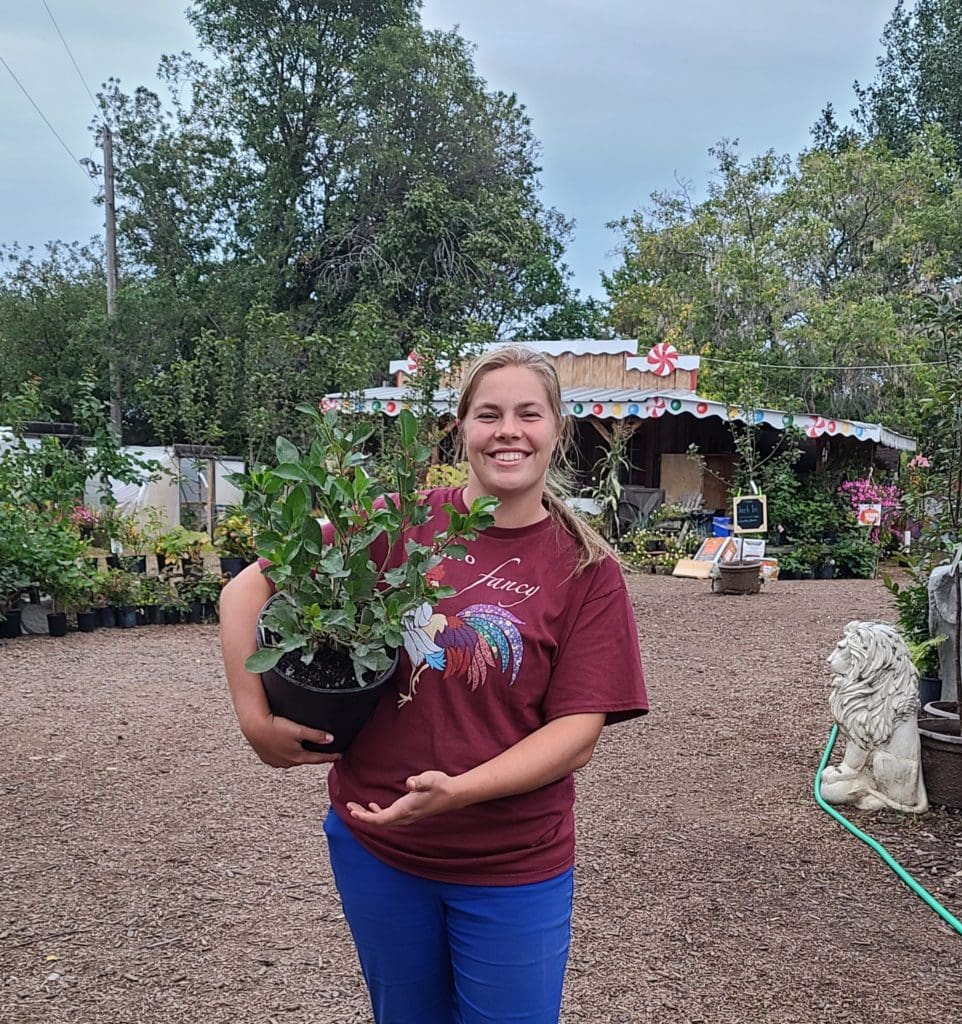
How To Plant Fruit Trees
So now that you know when to plant – it’s time to get digging!
Begin by creating a planting hole two to three times the diameter of the tree’s root ball, and one and a half times the depth of the pot your new tree is growing in. Dig out the clay and get rid of it! This allows plenty of space to add topsoil for the tree roots to expand and settle in. When you are done, the top of the soil of the container grown root ball should be just 1” below the surface of your new topsoil.
A big part of caring for your tree is understanding root growth and providing the means for them to do so. Most of a tree’s root system can be found within the top 18 inches of soil. When soil conditions are dry, many of those roots will grow along the surface beyond the drip-line of the tree.
How Much Soil Should Be Prepared? That depends on the amount of initial root growth you want. On our farm – we have the advantage of an undisturbed soil profile – with black #1 Topsoil two feet deep in every direction. However, when visiting homes in new subdivisions, it is with great sadness that we see that all the topsoil has been stripped of and sold, with only 1-2” going back over the barren clay. If you live in a new neighborhood, you should plan for this! Instead of digging 1½ feet deep and treating the soil for a 3-foot-wide hole, treat the soil within a 6-foot radius of where the tree will be planted. As the tree grows, continue supplementing the soil’s nutrient and mineral levels to optimize root growth by top dressing with topsoil and compost.
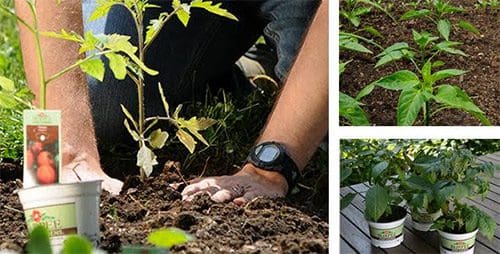
Types of Soil – Your tree’s roots will be directly impacted by the type of soil they encounter as they grow. When preparing soil for a new tree, try to match the soil to the species’ preference. This will promote healthy (and faster) root growth.
Sandy Soil: Contains loose particles which allow air to penetrate and water to run off. It does not hold moisture very well and is typically poor in nutrients.
Clay Soil: Contains compact particles which do not allow much air retention. This soil holds water very well and is generally high in nutrients. However – it is easy to waterlog tree roots and drown them.
Sandy, Clay Soil – This soil is a combination of the first two. It can retain air, and is dense enough to keep moisture while being nutrient rich.
Watering Tips: A common mistake is to water the trunk of the tree, rather than the root zone. Another common misconception is that “tree roots grow only to the tree’s drip line.” This could not be further from the truth. In their never-ending quest for moisture and nutrients, tree roots can grow well beyond the drip line. An uninhibited healthy root system can grow into an area 5 to 7 times the surface area of the top of the tree. Look at it this way: If the crown of a mature and healthy tree has a surface area of 8 x 8 (64) square feet, it is quite possible that the root system will occupy five times the square foot area.
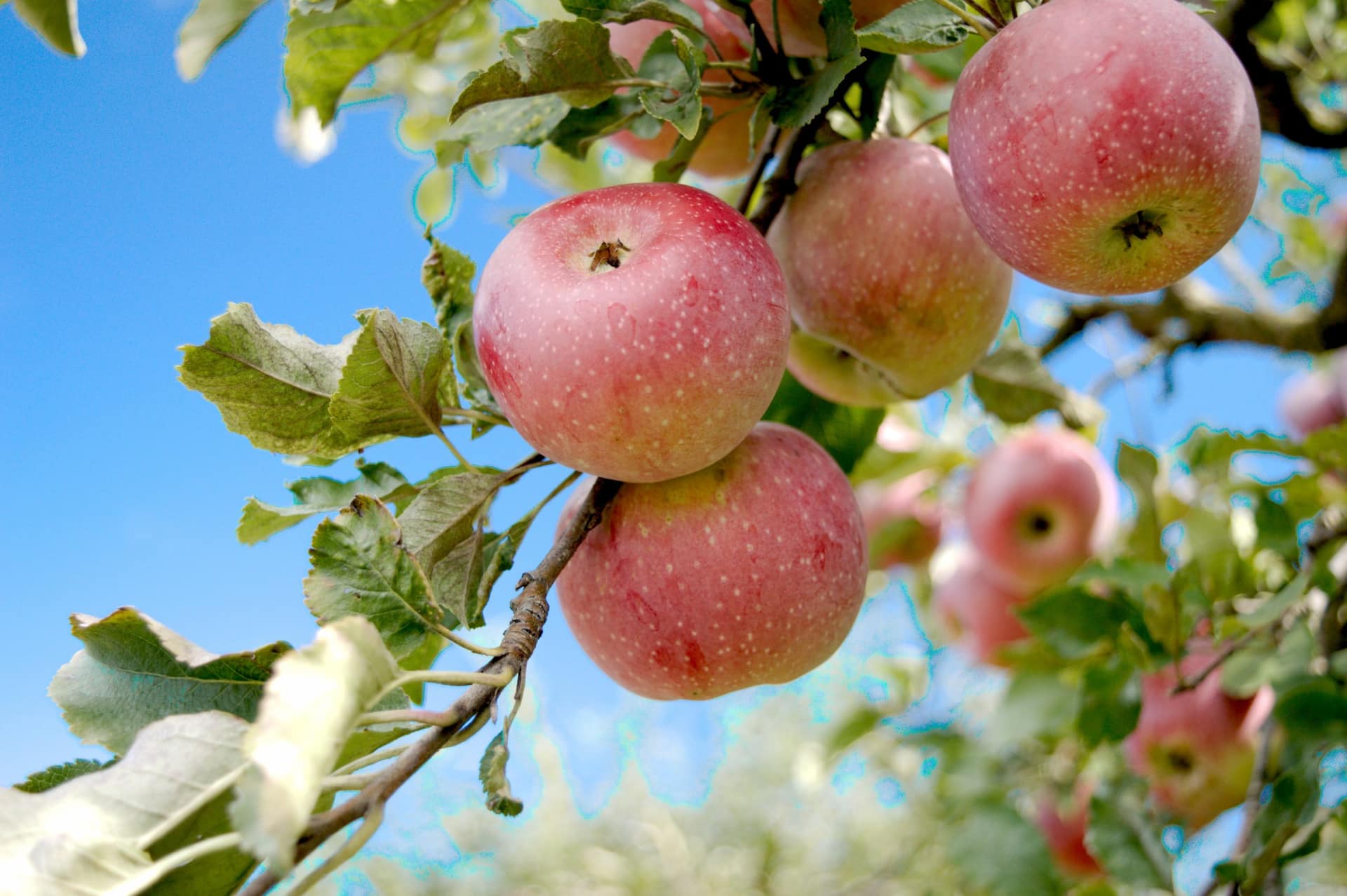
For the Keeners: Root Associations – The Ecosystem of Underground Neighborhoods
There has been a lot of media coverage of late into the secret lives of trees. When creating a landscape, urban forest, or yard upgrade, it is necessary for the health and longevity of your plants, trees and shrubs that varied species of each are planted into the ecosystem. Just as important is fertilization, watering, and mulching of the soil.
The proper preparation of the soil will allow the tree and plant roots to thrive and (very importantly) permits the growth of mycelia which spread and colonize those roots, eventually creating a mycorrhizal network (read more about this network here – www.thetreecareguide.com/trees-silently-communicate-below-the-surface/.
Mycorrhizae Network Associations – We are indeed talking about fungi. There are thousands of different fungi able to create a symbiotic relationship with the root systems of plant life. By doing so, the “infected” plant, shrub, or tree activates its chemical defense system. This alone strengthens the host’s immune system.
While the fungi receive nutrition from the host, they in turn increase the efficiency of the root system by providing a conduit between them. This conduit can transfer signals from one tree to another and assists those trees in transferring water, chemicals, and nutrients between them.
Shared Root Systems – Trees can naturally share root systems. As a tree’s roots grow and spread, they may encounter other tree roots. As they grow alongside each other and increase in size, they can grow or graft together. This act connects the two root systems becoming one larger root system.
Tree Planting and Soil – For Optimized Root Growth – For a tree’s roots to grow strong and deep, they need soil that caters to their species. Some prefer more acidic soil (like blueberries) while others prefer more sandy soil (like Saskatoons), and so on. Before planting a tree, find out the optimal soil composition for that species and match your soil to it.
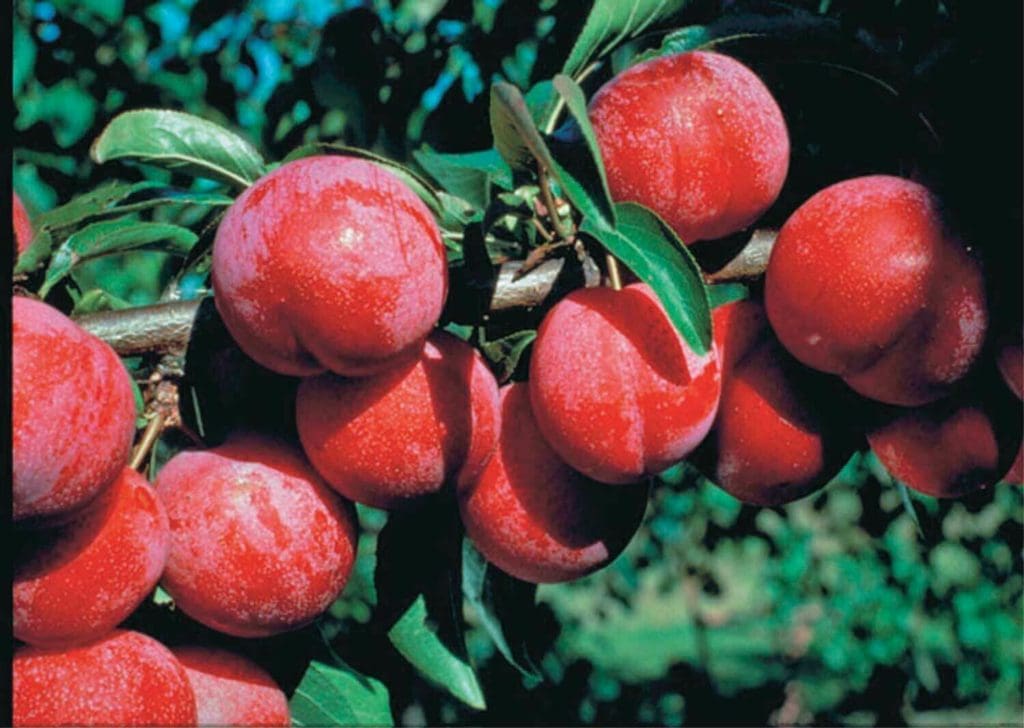
The Importance of Creating a Tree Watering Well and Mulching at the Right Time.
This is critical to the success of your planting adventure! Create a water well the size of your planting hole with a dam, dike, or small berm, of soil surrounding the root planting hole. This will allow you to be able to apply an appropriate amount of water for the roots of your tree. Water the entire root ball generously until the water pool around the hole. Soak the entire root ball to help reduce the shock of transplant to the tree.
If you are in a windy area, it is always a good idea to stake newly planted trees. Push a tall bamboo stake on the northwest side of your tree to keep it straight under the pressure of our prevailing winds. Push the stake a few feet from the root ball, being careful to protect the trunk as you tie the tree off. Plant tie ribbon is ideal. Twine is not.
The last week of October, finish your tree planting project by applying a 12″ layer of mulch. This will help the tree retain moisture and protect the roots from heavy freezing and thawing throughout winter. Continue to water the trees regularly through late fall every 10 – 15 days until winter sets in. In the spring, remove the mulch in May, and add 1” of compost over the roots of the tree.
Spacing Multiple Trees
On average, dwarf trees should be planted about 8 to 10 feet apart. If planting in rows, allow at least 12 feet between rows. For semi-dwarf trees, allow 10 to 12 feet between each tree, and 15 feet between rows. When it comes to full size fruit trees, sizing and spacing can vary greatly. It is best with full size trees to follow the guide on the label for spacing requirements.
My favorite time to plant is fall – when plants and trees are still dormant – to reduce their need for water. This practice works best for both me (growing hundreds of trees) and you (planting trees in your backyard). Here at We want to give you every advantage to succeed. Having fruit trees available in the fall is one of them.
I hope you are enjoying these beautiful fall days as much as we are!

